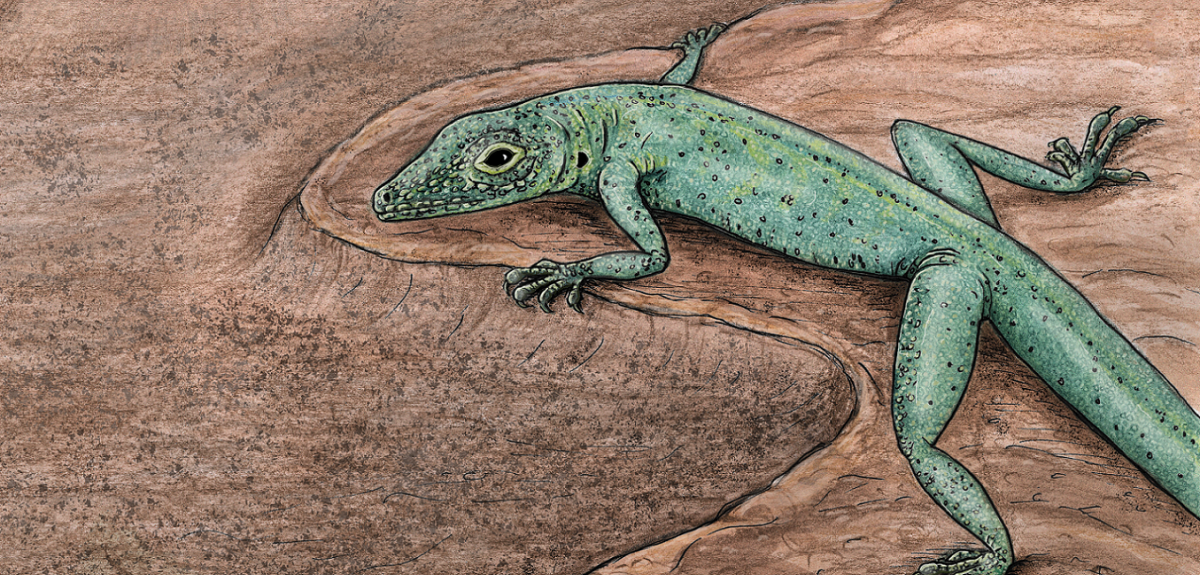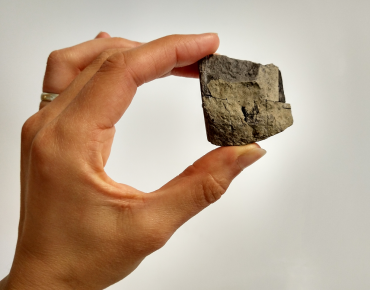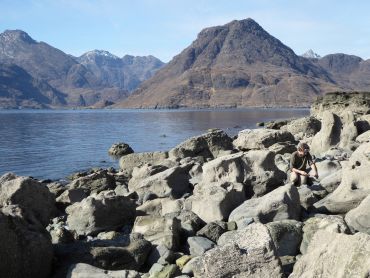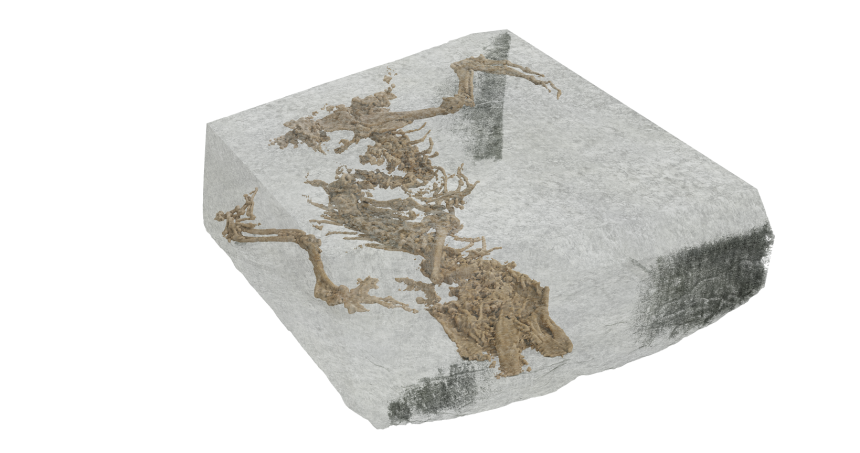
New Scottish fossil sheds light on the origins of lizards
A fossil discovery from Scotland has provided new information on the early evolution of lizards, during the time of the dinosaurs. The research, a joint project between researchers at the universities of Oxford, Warsaw, and UCL, has been published in the journal Nature.
The tiny skeleton discovered on the Isle of Skye, called Bellairsia gracilis, is only 6 cm long and dates from the Middle Jurassic, 166 million years ago. The exceptional new fossil comprises a near-complete skeleton in life-like articulation, missing only the snout and tail. This makes it the most complete fossil lizard of this age anywhere in the world.
Bellairsia has a mixture of ancestral and modern features in its skeleton, providing evidence of what the ancestor of today’s lizards (which are part of the wider animal group known as 'squamates') might have looked like.
The fossil was found in 2016 by a team led by Oxford University and National Museums Scotland. It is one of several new fossil discoveries from the island, including early amphibians and mammals, which are revealing evolution of important animal groups that persist to the present day.

Squamates are the living group that includes lizards and snakes, and comprises more than 10,000 species today, making them one of the most species-rich living vertebrate animal groups. They include animals as diverse as snakes, chameleons, and geckos, found around the world. The group is characterised by numerous specialised features of the skull and rest of the skeleton.
First author Dr Mateusz Tałanda (University of Warsaw and UCL) said: ‘This little fossil lets us see evolution in action. Bellairsia has some modern lizard features, like traits related to cranial kinesis – that’s the movement of the skull bones in relation to one another. This is an important functional feature of many living squamates.’
We already knew that the Middle Jurassic was an important time for lizard evolution, but we lacked the key fossils that would tell us what was going on. Fossils like this Bellairsia specimen have huge value in filling gaps in our understanding of evolution and the history of life on Earth.
Professor Roger Benson, Department of Earth Sciences, University of Oxford.
Although we know the earliest origins of squamates lie 240 million years ago in the Triassic, a lack of fossils from the Triassic and Jurassic has made their early evolution and anatomy difficult to trace.
Analysing the new fossil alongside living and extinct fossil squamates confirms Bellairsia belongs to the ‘stem’ of the squamate family tree. This means that it split from other lizards just before the origin of modern groups. The research also supports the finding that geckos are a very early branching lineage, and that the enigmatic fossil Oculudentavis, previously suggested to be a dinosaur, is also a stem squamate.
To study the specimen, the team used X-ray computed tomography (CT) which, like medical CT, allows for non-invasive 3D imaging. This allowed the researchers to image the entire fossil, even though most of the specimen is still hidden by surrounding rock. Whereas medical scanners work at the millimetre scale, the Oxford University CT scanner revealed details down to a few tens of micrometres.
Parts of the skeleton were then imaged in even greater detail, including the skull, hindlimbs and pelvis, at the European Synchrotron (ESRF, Grenoble, France). The intensity of the synchrotron beam permits a resolution of 4 micrometres, revealing details of the smallest bones in the skeleton.

The study ‘Synchrotron tomography of a stem-lizard elucidates early squamate anatomy’ has been published in the journal Nature.
The research was led by Dr Mateusz Tałanda (University of Warsaw) and involved researchers from the University of Oxford’s Earth Sciences Department, Oxford University Museum of Natural History, UCL (University College London), the European Synchrotron Radiation Facility, the Natural History Museum in London and National Museums of Scotland.
Funding was provided by the Ministry of Science and Higher Education, Poland. The John Muir Trust provided access to the Elgol Coast Site of Special Scientific Interest, and NatureScot granted permits for fossil collection.

 Expert Comment: Why has Trump launched so many tariffs and will it cause a recession?
Expert Comment: Why has Trump launched so many tariffs and will it cause a recession?
 Expert Comment: Is it possible to support both AI innovation and human creativity?
Expert Comment: Is it possible to support both AI innovation and human creativity?
 Oxford unmasks the fraudsters behind the forgeries for April Fakes Day 2025
Oxford unmasks the fraudsters behind the forgeries for April Fakes Day 2025